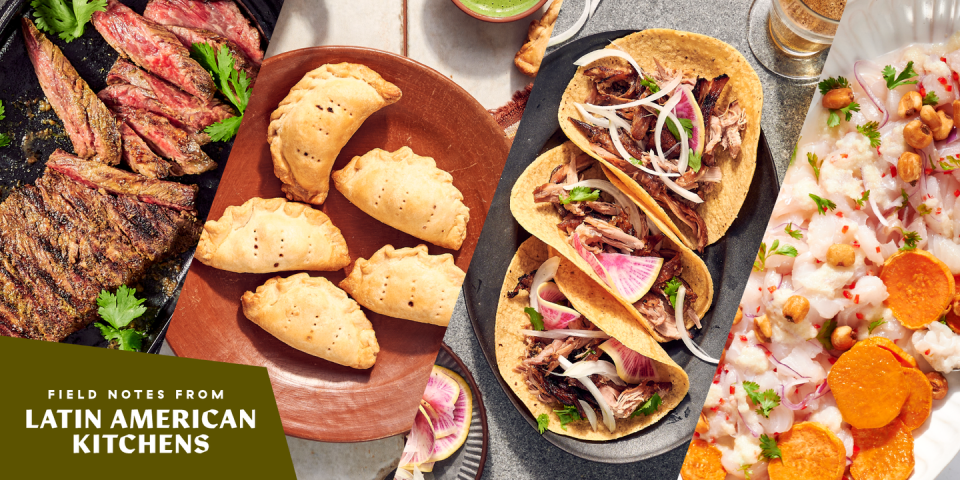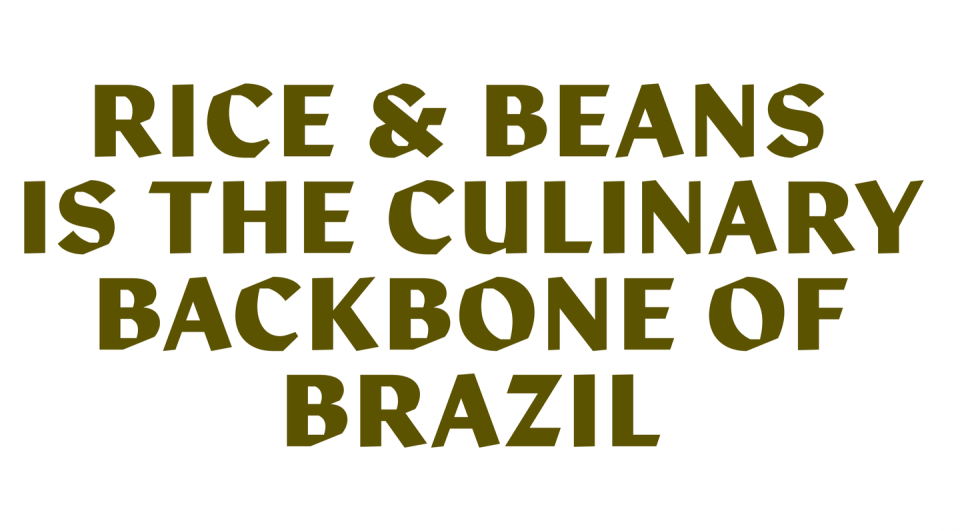Field Notes From Latin American Kitchens

Chile, lime, cumin, and oregano—these are among the signature flavors of Latin American cuisines. But so is tropical fruit like mango, papaya, and coconut; smoky pork-laced beans; earthy corn tortillas; and marinated meat kissed by fire.
Latin America encompasses a massive area—nearly 13 percent of the earth’s surface—containing tremendous geographic diversity: snow-capped mountains in southernmost Chile, tropical islands surrounded by tempestuous waters in the Caribbean, cactus-filled deserts in Mexico, rainforests in Brazil. Each of these places has a distinct history with unique cultures and civilizations dating back more than 5,000 years. But what unites us is the migration of the region’s indigenous inhabitants—Maya, Aztec, Arawak, and Taíno—and a shared experience of Spanish colonization that kicked off the flow of ingredients from western Europe and Spain’s other territories, as well as the food, techniques, and cultures of enslaved Africans.
Latinx folks are fiercely proud of their food and will go to the mat over who makes the best salsa. But there’s much more that unites us than what separates us, and over the generations a handful of dishes have risen above. While it’s impossible to condense such a vast and diverse region into a small group of essentials, these important staples conjure the flavors of home for those of us living in the diaspora.

The popularity of Latin American food in the U.S. is unmistakable. It seems that even the smallest towns have a beloved Mexican restaurant or taqueria. You can also see the evidence of specific migrations in the food offerings in the U.S.: Salvadoran pupusas in San Francisco, Dominican deli carne guisada in the Bronx, Brazilian or Argentinian steak houses in every major city.
The essays in this collection explore some of Latin America’s most beloved signature dishes. Undeniably, tacos reign supreme in the U.S. According to Steven Alvarez, it’s not just because they are objectively delicious, but because they signify the movement of people, culture, language, and ideas across the nation. Similarly, rice and beans in their infinite variations are a daily ritual for Latinos worldwide, and Leticia Moreinos Schwartz takes us on a journey to the botequins of Brazil, where saucy black beans are enjoyed by people of all backgrounds. The region also boasts delectable snack foods—alcapurrias in Puerto Rico, pandebono in Colombia—but among the most ubiquitous are empanadas, which can be sweet or savory, baked or fried. Nico Vera shares his Peruvian family’s tradition while offering a plant-based variation of the meaty classic.
Fire and smoke are among the oldest cooking techniques known to man, and in Latin America it’s a common way to prepare seasoned meats. Chorizo, pork, chicken, lamb, and even seafood are cooked over fire in what’s interchangeably called an asado or parrillada, or simply a barbecue. Jennifer Zyman shares her dad’s recipe for carne asada, which is one of the best known Latin American meat dishes. And while Latin American food is often intensely flavored, rich, and filling, along the region’s ample coasts you find the simplest, freshest, and most delicate seafood dish: ceviche. Maribel Rivero, an Austin-based chef with Bolivian and Mexican roots, shares her journey of discovering the history and techniques behind Peruvian ceviche, which is often considered the most elegant version.
The ancestors of the people we now call Latino have been in the Americas for thousands of years, so it should be no surprise that Spanish is the second language of the United States. Latinx people and their cuisines are deeply woven into the tapestry of the country. And we can maintain the pride we have for our version of these popular dishes—I mean, my grandmother definitely made the best arroz con habichuelas—while celebrating the variations, and adapting our own recipes in the spirit of Latinx pride.







Photography by Doaa Elkady | Food Styling by Mariana Velasquez | Art Direction by Carlos Dominguez | Visual Direction by Rebecca Simpson Steele | Prop Styling by Paige Hicks
You Might Also Like

 Yahoo Sports
Yahoo Sports 